
All categories
Featured selections
Trade Assurance
Buyer Central
Help Center
Get the app
Become a supplier

(1334 products available)

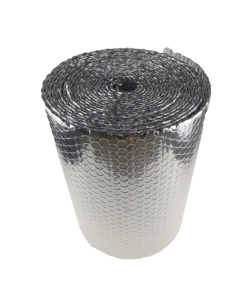

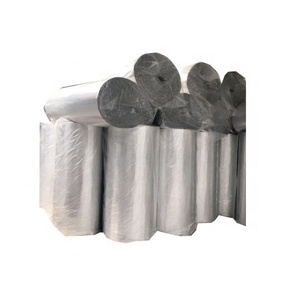









































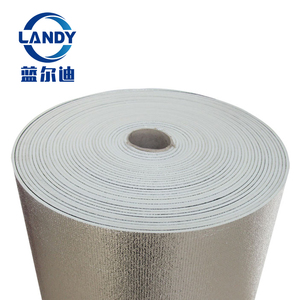
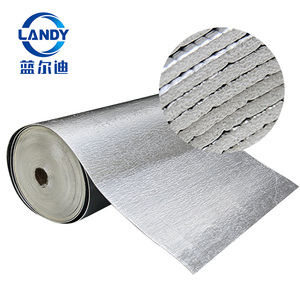
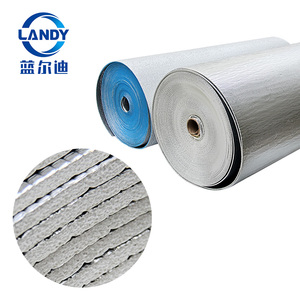
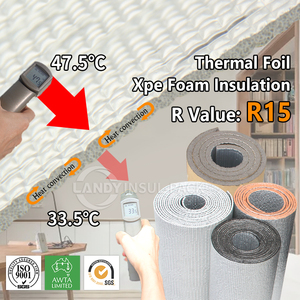
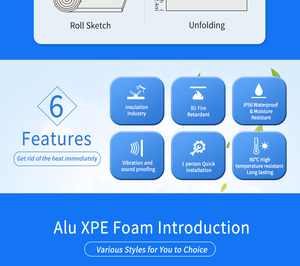
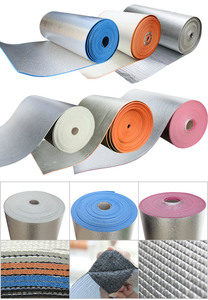
Insulation materials are used to reduce heat transfer between the inside and outside of a building. They help to keep homes and buildings warm in the winter and cool in the summer. Insulation is an essential part of any home because it not only keeps the temperature inside comfortable but also saves energy. Different insulation materials have different R-values. The R-value measures insulation material efficiency; the higher the R-value, the better the insulation. Various DIY thermal insulation materials are available in the market, which can be classified as follows:
Fiberglass
This is one of the most commonly used insulation materials. It consists of fine strands of glass woven together to form a fiber. The fibers are then formed into batts, blankets, or loose fill. Fiberglass works well as a thermal insulator because it traps air in the spaces between the fibers. Air is a poor conductor of heat, so this prevents heat transfer. It is used in walls, attics, and floors. Its R-value per inch is about 2.9 to 3.8.
Foam board insulation:
This insulation material consists of polystyrene, polyurethane, or extruded foam. It comes in rigid panels that can be easily cut to size and shape. It works well as a thermal insulator because the foam traps air in the closed cells. The air cannot move freely, so it prevents heat transfer. Foam board insulation is used in exterior walls, foundations, and roofs. Its R-value per inch is about 4.0 to 6.5.
Spray foam insulation:
This material is made up of isocyanate and polyol resin. These components are mixed to form a foam that expands and hardens. It works as a thermal insulator because the closed cell foam traps air, and the liquid in the cells prevents heat transfer. Spray foam insulation is used in walls, roofs, and ceilings. Its R-value per inch is about 5.0 to 7.0.
Mineral wool:
This insulation is made from recycled materials such as steel slag, basalt rock, or natural oils. It is formed by melting the raw materials at high temperatures and then spinning them into fibers. The fibers are then formed into batts, blankets, or loose fill. It works as a thermal insulator because it traps air in the spaces between the fibers. Mineral wool is used in walls, attics, and floors. Its R-value per inch is about 3.0 to 4.0.
Reflective or Radiant Barrier:
This thermal insulation material consists of a highly reflective surface, such as aluminum foil, on a substrate like cardboard or plastic. The reflective surface is installed facing an air space, such as an attic or wall cavity. It works to reduce heat transfer by reflecting radiant heat away from the living space. Radiant barriers are most effective in hot climates where cooling is needed. Their R-value is not measured in the same way as other insulation materials because they work by reflection rather than absorption.
The primary function of thermal insulation materials is to reduce heat transfer between areas with different temperatures. This is accomplished by materials with low thermal conductivity. These materials are used to keep buildings warm in the winter and cool in the summer. They are also used to keep refrigerated and heated goods at a constant temperature.
Some key features of DIY thermal insulation materials include:
Thermal conductivity: This is the most important feature of any insulation material. It shows how well a material can conduct heat. Materials with low thermal conductivity values are good insulators. Materials with high thermal conductivity values are poor insulators. Insulation materials are generally rated using an R-value. The R-value indicates resistance to heat flow. A higher R-value means better insulation.
Density: Density affects the thermal conductivity of insulation materials. Usually, low-density materials have low thermal conductivity. However, this is not a rule. For example, fiberglass has low density and high thermal conductivity. In contrast, rock wool is also low-density but has low thermal conductivity.
Durability: Insulation materials should be durable and last a long time. Some materials, like fiberglass and cellulose, can settle over time and reduce their insulating value. Others, like spray foam, are very durable and maintain their R-value for many years.
Moisture resistance: Some insulation materials can be affected by moisture and reduce their insulating value. This is common in cellulose and fiberglass. However, other materials like closed-cell spray foam have moisture-resistant properties.
Air permeability: Good insulation material should prevent air leaks. Air permeability affects the thermal conductivity of insulation. Insulation materials should have air seals or barriers to prevent air movement.
Ease of installation: Some insulation materials are easy to install, while others require trained professionals. For example, fiberglass batts are easy to install, but fiberglass loose-fill requires special equipment.
Materials and environmental impact: Insulation materials can have different environmental impacts. Some materials are recycled, while others are renewable. For example, cellulose is made from recycled paper, and cotton is from a renewable resource.
Insulating Walls:
Thermal insulation materials can be used to prevent heat from escaping or entering through the walls. For exterior walls, insulation materials are installed behind the walls. For interior walls, insulation materials are installed on the walls. This minimizes heat transfer through the walls.
Insulating Roofs:
Thermal insulation materials are installed on the underside of the roof. This reduces heat loss or gain through the roof.
Insulating Floors:
Thermal insulation materials are also installed on the floors. This minimizes heat loss or gain through the floors.
Insulating Windows:
Thermal insulation materials are not directly installed on windows. However, materials such as curtains, shades, or blinds can be added to minimize heat transfer through the windows.
Insulating Pipes and Ducts:
Thermal insulation materials are wrapped around pipes and ducts. This minimizes heat loss or gain through the pipes and ducts.
Insulating Hot Water Tanks:
Thermal insulation materials can be wrapped around hot water tanks. This minimizes heat loss from the tanks.
Insulating Refrigerators and Freezers:
Thermal insulation materials are used in the construction of refrigerators and freezers. This minimizes heat transfer from the outside to the inside of the appliances.
Insulating Outdoor Cooking Areas:
Thermal insulation materials can be used to insulate outdoor cooking areas such as ovens, grills, and smokers. This minimizes heat loss or gain and keeps the heat contained to the cooking area.
When choosing the right diy thermal insulation material, several factors must be considered to ensure it meets the intended purpose. These factors include;
Determine the R-value
The R-value of an insulation material indicates its effectiveness. The higher the value, the more resistant it is to heat flow. Depending on the climate zone, different R-values are recommended. For warmer climates, an R-value of 13-15 is sufficient for walls, while 19-21 is suitable for roofs. On the other hand, colder regions require higher R-values of up to 60 for roofs and 30-40 for walls. When choosing a thermal insulation material, consider the recommended R-value for your region to ensure optimal thermal control.
Consider the climate
The type of climate in an area affects how heat moves in and out of buildings. In hot and sunny areas, insulation materials with reflective properties are ideal to keep indoor spaces cool. Conversely, in cold regions, materials with a high R-value are suitable for heat retention. As a result, it is important to consider the local climate when choosing thermal insulation to achieve the desired energy efficiency and comfort level.
Check the fire resistance
When choosing a thermal insulation material, it's important to check its fire resistance. Some materials are more flammable than others, and it's crucial to select a material that meets the building code requirements for the specific application. Look for materials that have been tested for their fire resistance and have received a rating according to their standard.
Moisture resistance
If the insulation is installed in an area exposed to high moisture levels, choose a material with moisture resistance. This prevents the growth of mold and mildew, which can be harmful to human health and compromise the structural integrity of a building.
Ease of installation
When choosing a thermal insulation material, consider the ease of DIYers to install it. Materials such as spray foam insulation require special skills and equipment to install, and homeowners incur additional costs. On the other hand, batts and rolls are easy to install and cut to size, making them a good choice for DIY projects.
Q1: What is the best DIY thermal insulation material?
A1: There is no single best thermal insulation material, but there is an ideal one for a specific application. For DIY projects, fiberglass batts are ideal, especially for insulating walls, floors, and roofs. It is economical and has a high R-value. Closed-cell spray foam is also a great DIY thermal insulation material. It comes with an R-value of up to 6.5 per inch and creates an air seal when sprayed. It prevents thermal bridging by sealing gaps and cracks.
Q2: What is the cheapest type of insulation?
A2: Fiberglass batts are the cheapest type of insulation. It is a good thermal insulator and comes with a high R-value. Fiberglass batts are also easy to install, making them a popular choice for many DIYers.
Q3: What is R-value in thermal insulation?
A3: The R-value in thermal insulation material indicates the material's resistance to heat flow. The higher the value, the more effective the insulation material will be. Insulation materials have different R-values depending on the thickness and type.
Q4: What are the disadvantages of fiberglass insulation?
A4: One of the major disadvantages of fiberglass insulation is that it can lose its R-value when it becomes wet. Air gaps, tears, and compression can also cause loss of R-value. Proper installation is therefore important. It also has the potential to irritate skin and lungs when disturbed during installation.